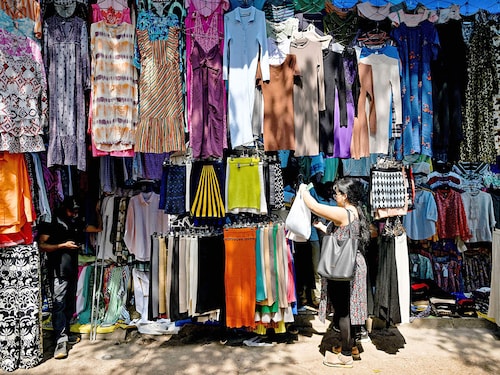India's green fashion lovers switch to secondhand
It is a tiny drop in a massive ocean, but hipster shoppers in New Delhi say their example is slowly shifting the throwaway attitudes rampant among India's middle-class


India"s enormous garment sector churns out billions of dollars" worth of new clothes each year, but some local fashion lovers are switching to secondhand to assuage worries about the industry"s environmental impact.
It is a tiny drop in a massive ocean, but hipster shoppers in the capital New Delhi say their example is slowly shifting the throwaway attitudes rampant among India"s middle class.
New Delhi is dotted with markets offering secondhand clothes, a thrifty alternative for those on low wages—or making an ethical choice.
"It"s an environmentally conscious decision," said Yuvika Choudhary, a 21-year-old student shopping for vintage clothes.
There is rarely an effective system for recycling clothing in India, with waste overflowing in towering landfills.
Kriti Tula, 36, used repurposed fabric to found the fashion brand Doodlage in 2012.
When she started, she was worried about telling shoppers her products were made from waste.
But a decade later she said there was a greater awareness of the importance of sustainability.
"It"s important to circulate things that are already existing," Tula said. "The only way to circulate them is to think of ways to rent, to thrift and to repair."
India is the world"s fifth biggest garment exporter, with the trade worth $15 billion in 2023, according to the World Trade Organization.
Some in India turned to thrift shopping after being restricted at home during the Covid-19 pandemic and finding online stores promoted on social media.
Neha Butt, 33, first ran her secondhand clothes business on Instagram before opening a physical store in the capital New Delhi in 2022.
She said her Huckleberry Hangers store would have been unthinkable before the "help of Instagram and because of climate awareness".
The market is microscopic compared to the industrial production of new garments, but shoppers say it is more about the message that it sends—and changing attitudes has to start somewhere.
Swati Sambyal, an expert in the circular economy, warned that effective resource management required tackling the mass generation of textiles in the first place.
"When it comes to textile waste as an issue, we also have to address both generation as well as consumption patterns," she said.
Sambyal said some brands were shifting to using natural textiles, including ones made from banana and pineapple fibres, in a bid to reduce their environmental impact.
But in the end, she said, nothing will change unless the consumer changes too.
"It depends entirely on the consumer," she said. "It"s at their will and decision."
First Published: Oct 28, 2024, 14:36
Subscribe Now